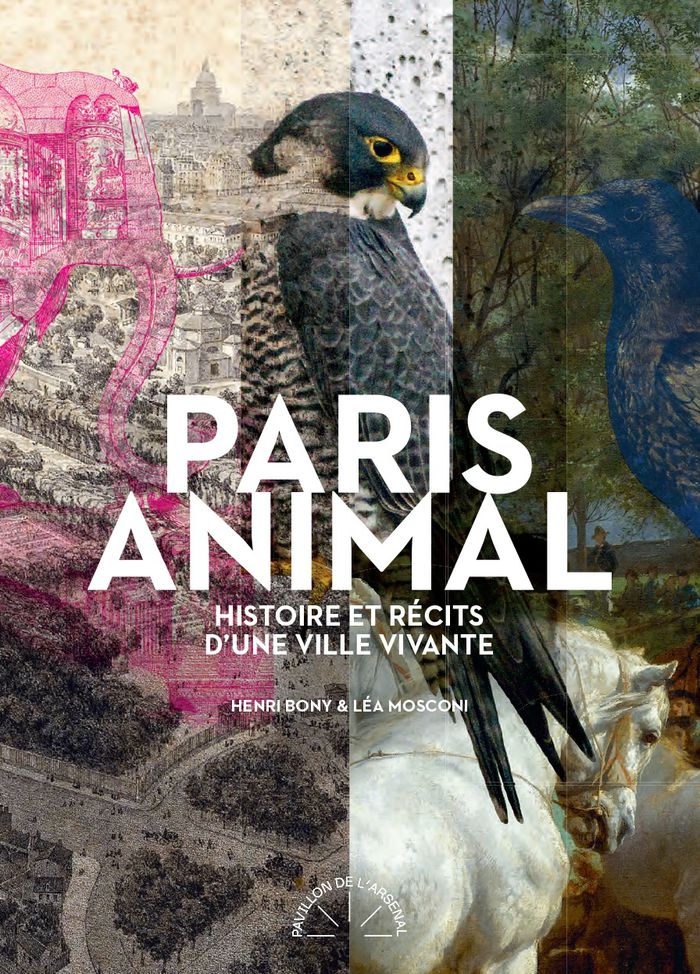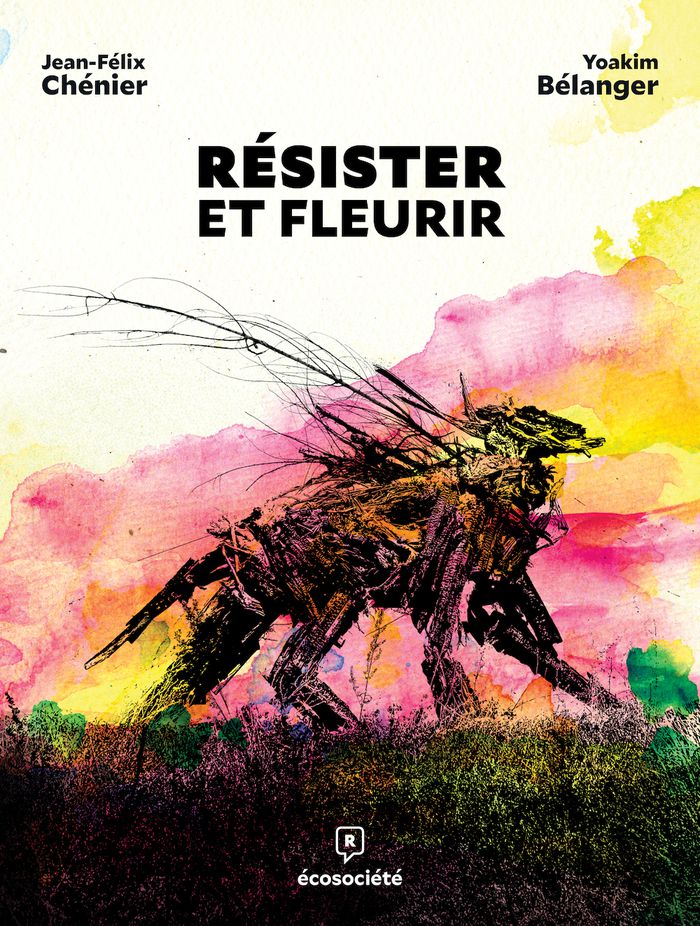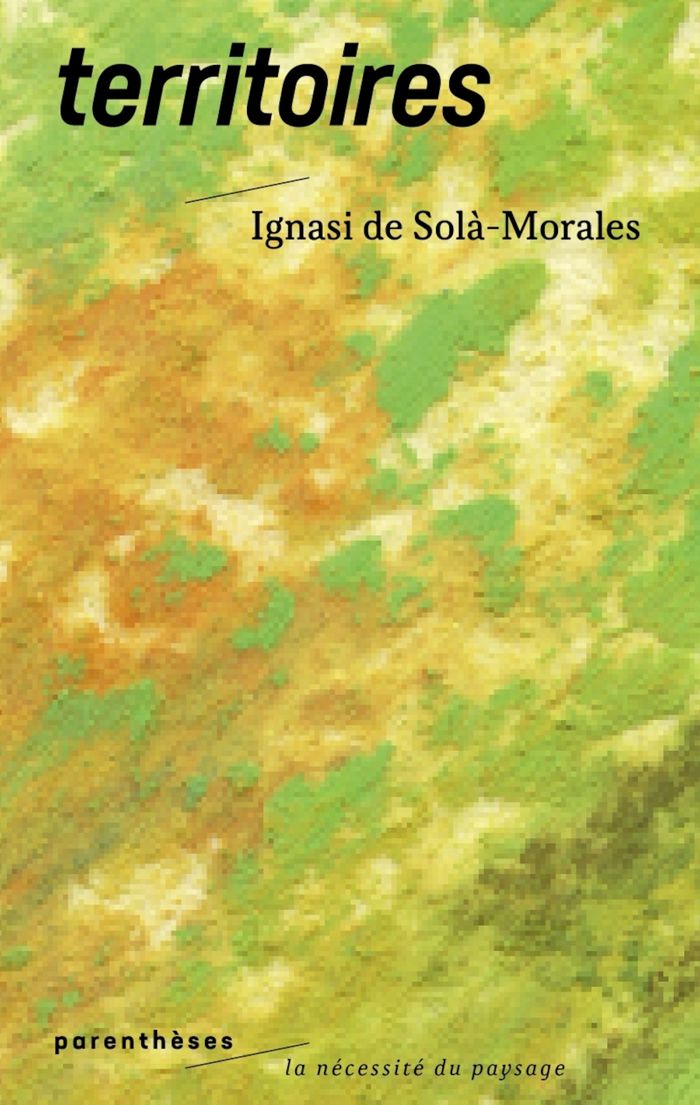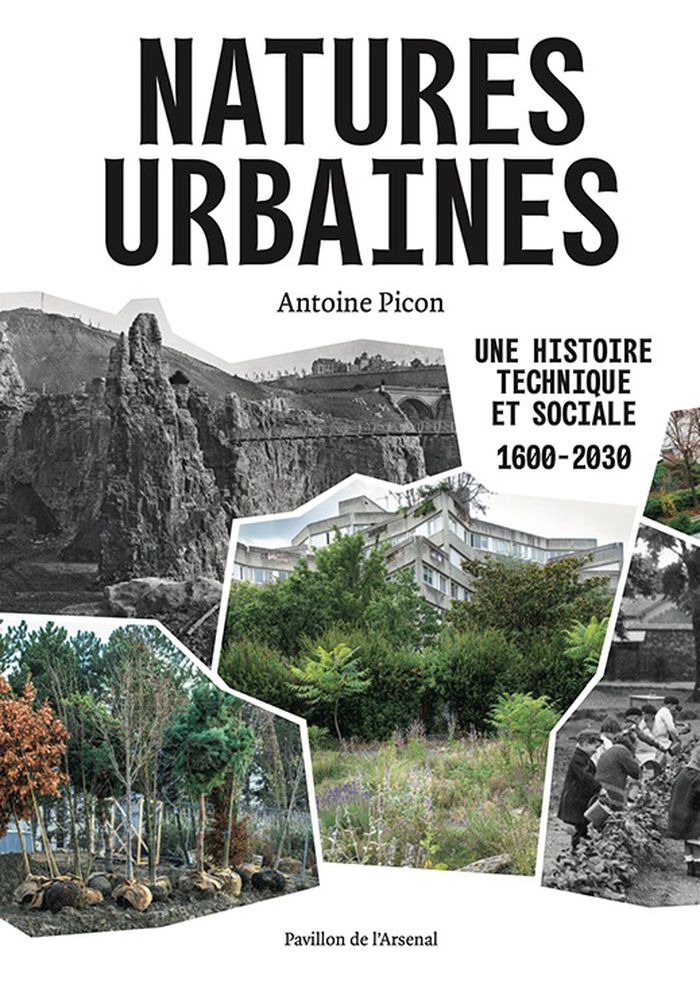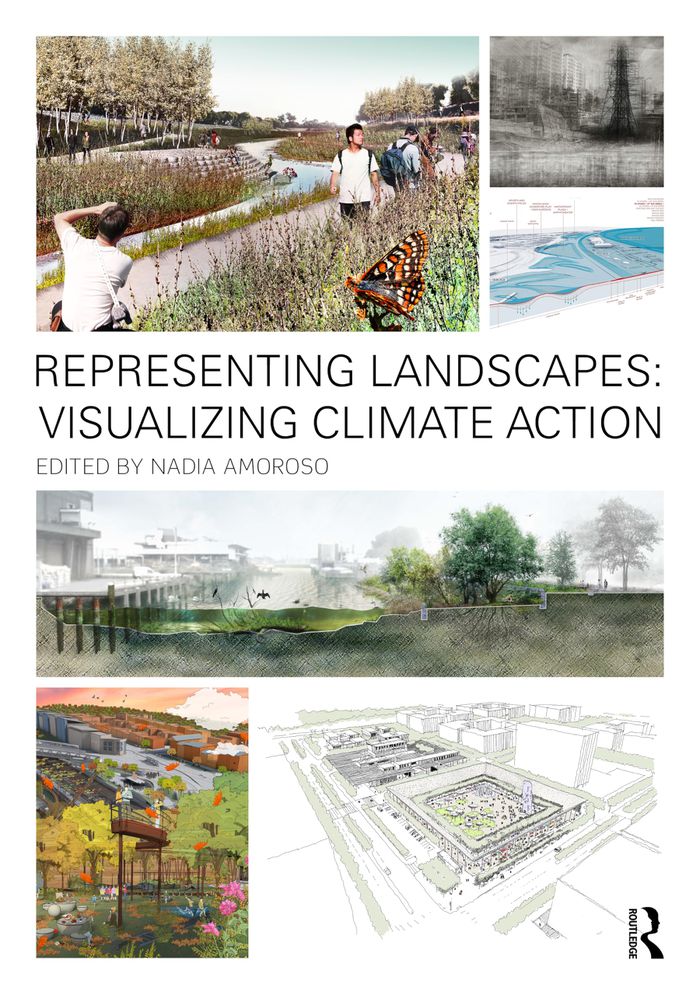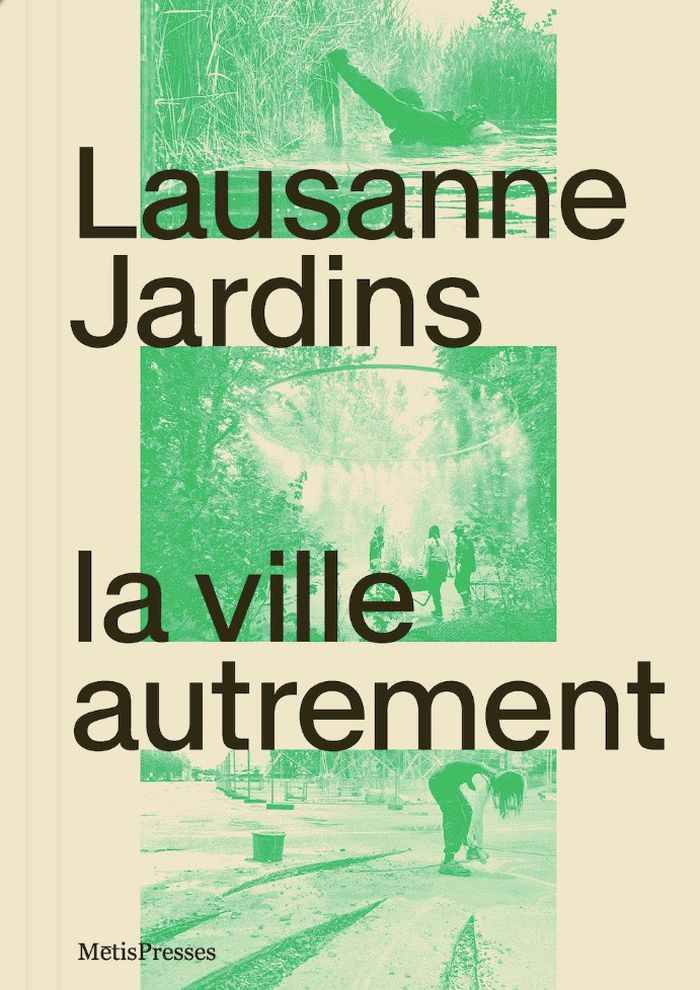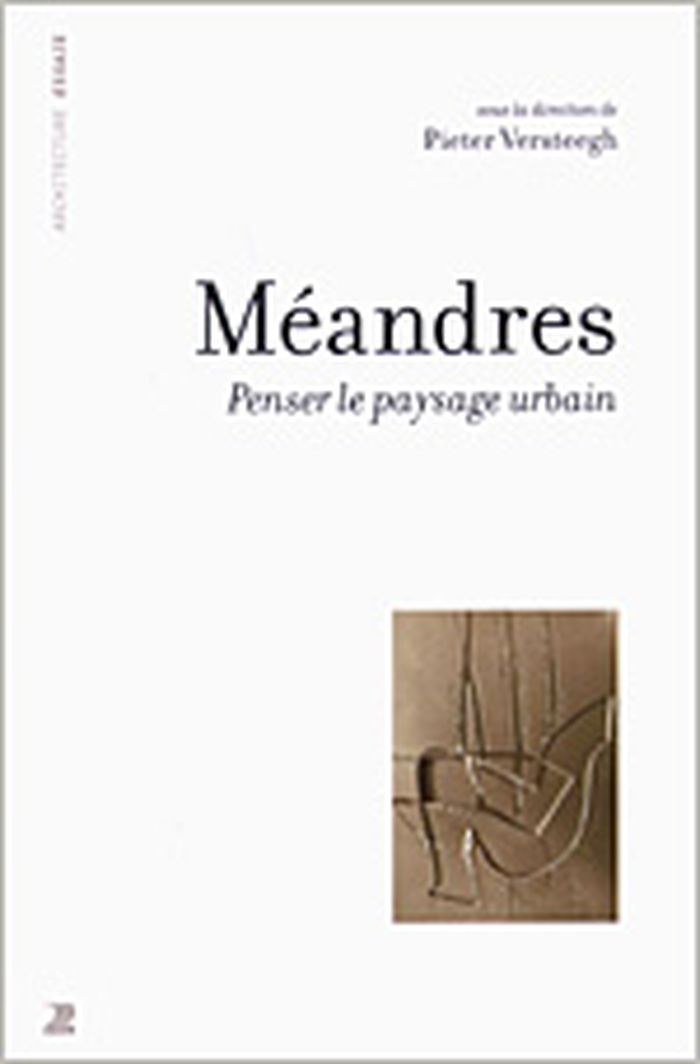$27.95
(disponible sur commande)
Résumé:
La campagne est vivante, comme lieu de vie et comme imaginaire. La pandémie de Covid-19 a encore accéléré ces tendances?: vivre à la campagne serait «?la?» solution face aux crises sanitaires, écologiques, économiques ou sociales de nos vies citadines contemporaines. Pour aller au-delà d’un certain fantasme, Valérie Jousseaume réalise un état des lieux et remet la(...)
Un nouveau récit pour les campagnes
Actions:
Prix:
$27.95
(disponible sur commande)
Résumé:
La campagne est vivante, comme lieu de vie et comme imaginaire. La pandémie de Covid-19 a encore accéléré ces tendances?: vivre à la campagne serait «?la?» solution face aux crises sanitaires, écologiques, économiques ou sociales de nos vies citadines contemporaines. Pour aller au-delà d’un certain fantasme, Valérie Jousseaume réalise un état des lieux et remet la campagne en perspective. Elle interroge le rôle et les atouts des territoires dans la transition sociétale. Et, surtout, elle redonne aux ruraux une place d’acteurs dans ce changement de civilisation en cours. Le livre déconstruit les cadres de pensée et les vocabulaires, pour sortir la «?France périphérique?» du cul-de-sac intellectuel où elle se trouve.
Paysages urbains
$65.95
(disponible en magasin)
Résumé:
Cet ouvrage propose de construire une histoire animale de Paris en articulant deux principaux objectifs. D’une part, il s’agit de rendre visibles le rôle et la place des bêtes dans l’histoire de la ville et de révéler que ce sont aussi les vaches, les mésanges, les loups, les fouines, les faucons, les girafes, les chevaux, les brochets et les cerfs qui ont fait le Paris(...)
Paris animal : Histoire et récits d'une ville vivante
Actions:
Prix:
$65.95
(disponible en magasin)
Résumé:
Cet ouvrage propose de construire une histoire animale de Paris en articulant deux principaux objectifs. D’une part, il s’agit de rendre visibles le rôle et la place des bêtes dans l’histoire de la ville et de révéler que ce sont aussi les vaches, les mésanges, les loups, les fouines, les faucons, les girafes, les chevaux, les brochets et les cerfs qui ont fait le Paris d’aujourd’hui. Alors que les animaux ont longtemps été effacés ou minorés des récits dominants, l’histoire que nous campons tente de mettre en lumière ce que la présence animale a généré dans la capitale. D’autre part, en menant cette enquête sur le temps long, en observant les lieux de partage entre l’humain et l’animal, qu’ils soient l’expression de tension, de collaboration ou de domination, il s’agit de dégager des indices pour imaginer ce que pourrait être un Paris à même de créer une altérité avec l’animal ; pour reprendre les mots de la philosophe Donna Haraway : « Nous devons apprendre ainsi, au coeur d’un présent épais, à bien vivre et à bien mourir, ensemble. »
Paysages urbains
Loving the High Line
$20.00
(disponible sur commande)
Résumé:
As an elevated rail line, designed to lift freight trains serving the Hudson River docks above street level circulation, The High Line was originally constructed as material infrastructure for an industrial city. It was closed in 1960s and stood abandoned for the next forty years. In this time organic debris accumulated and decayed, and seeds landed on the newly forming(...)
Loving the High Line
Actions:
Prix:
$20.00
(disponible sur commande)
Résumé:
As an elevated rail line, designed to lift freight trains serving the Hudson River docks above street level circulation, The High Line was originally constructed as material infrastructure for an industrial city. It was closed in 1960s and stood abandoned for the next forty years. In this time organic debris accumulated and decayed, and seeds landed on the newly forming soil creating a meadow on the derelict railbed. This microcosmic biome then also became a heterotopic, other space, in the social ecology of the city as an efflorescence of new art forms and underground subcultures flourished in the evacuated post-industrial spaces of Chelsea. These processes would unfold as New York City was being transformed into a global center in an emerging political-economy defined by the integration of finance capital with media and information industries. In this, marginal spaces of the kind that developed in Chelsea, and the cultures that create them, became important sources of new aesthetic and cultural innovation, that offer an exploitable social ground from which to extract semiotic value. As the Bloomberg administration gave shape to this new regime, a project was initiated to convert the High Line into a publicly accessible, linear park. This would be realized through a convoluted process in which the manifold tensions and contradictions of the postmodern city would be dramatically played out and the disjunctions between ideal image regimes and the reality of the material substrates that support them would be brought to light, if only to be newly obscured. The High Line urban park has been both heralded as a definitive model for new urban development, and denounced as a driver, or at least a morbid symptom, of devastating gentrification, and the destructive financialization of urban space. This text, originally published in 2015 as part of the Deconstructing the High Line anthology, edited by Mark Linder and Brian Rosa, tracks a collection of interconnected historical treads that converge in the reconstruction of the High Line, and situates the project within architectural discourse and practice, and social and material conditions with which it struggles to engage.
Paysages urbains
Résister et fleurir
$35.00
(disponible en magasin)
Résumé:
Printemps 2020. En plein confinement, un professeur donne un cours sur l’utopie et la dystopie en s’inspirant d’une lutte menée dans le quartier Hochelaga à Montréal. Les résident·e·s du secteur se mobilisent pour défendre un terrain vague, où la nature a repris ses droits, contre la construction d’un terminal de transbordement de conteneurs. Bruit, poussière et(...)
Résister et fleurir
Actions:
Prix:
$35.00
(disponible en magasin)
Résumé:
Printemps 2020. En plein confinement, un professeur donne un cours sur l’utopie et la dystopie en s’inspirant d’une lutte menée dans le quartier Hochelaga à Montréal. Les résident·e·s du secteur se mobilisent pour défendre un terrain vague, où la nature a repris ses droits, contre la construction d’un terminal de transbordement de conteneurs. Bruit, poussière et vibrations 24 heures sur 24… Le projet de Ray-Mont Logistiques, emblématique de la mondialisation économique, fait craindre le pire. Quel pourrait être le point de bascule dans cette lutte citoyenne ? En quoi les utopies peuvent-elles être le moteur d’une communauté ? Comment contrer la destruction des écosystèmes ? Alors que les « zones à défendre » se multiplient, ''Résister et fleurir'' livre une réflexion profonde sur le monde que nous voulons bâtir... ou détruire.
Paysages urbains
Territoires
$36.95
(disponible sur commande)
Résumé:
Incontournables dans le paysage contemporain de la pensée urbaine, les écrits théoriques d'Igniasi de Solà-Morales n'avaient jusqu'ici jamais été traduits en français. Ce recueil de dix textes recèle pourtant une richesse de vues propres à nourrir toute réflexion sur le rapport entre ville, architecture et territoire, qu'il s'agisse des défis d'hier ou de l'avenir latent(...)
Territoires
Actions:
Prix:
$36.95
(disponible sur commande)
Résumé:
Incontournables dans le paysage contemporain de la pensée urbaine, les écrits théoriques d'Igniasi de Solà-Morales n'avaient jusqu'ici jamais été traduits en français. Ce recueil de dix textes recèle pourtant une richesse de vues propres à nourrir toute réflexion sur le rapport entre ville, architecture et territoire, qu'il s'agisse des défis d'hier ou de l'avenir latent de notre civilisation ultra-urbaine. Invitant d'abord à une relecture de l'histoire des théories et de la pratique architecturales depuis la Seconde Guerre mondiale, l'auteur, à la fois architecte et historien, considère la ville sous l'angle de son dégagement progressif de la matérialité, et l'envisage comme un ensemble, infini et indéfini, de juxtapositions, de réseaux et de flux. Comment aménager cet espace urbain désormais fluide, sinon « liquide »? qu'y bâtir? selon quels principes?
Paysages urbains
$85.00
(disponible sur commande)
Résumé:
Depuis plus de trois siècles, se pose la question de la place de la nature dans l'aménagement des villes. Des premiers jardins ouverts au public à la fin du XVIe siècle, comme les Tuileries à Paris ou Hyde Park à Londres, aux forêts urbaines contemporaines, les réponses apportées par les architectes, ingénieurs, paysagistes et leurs commanditaires sont inséparables de(...)
Natures urbaines : Une histoire technique et sociale 1600-2030
Actions:
Prix:
$85.00
(disponible sur commande)
Résumé:
Depuis plus de trois siècles, se pose la question de la place de la nature dans l'aménagement des villes. Des premiers jardins ouverts au public à la fin du XVIe siècle, comme les Tuileries à Paris ou Hyde Park à Londres, aux forêts urbaines contemporaines, les réponses apportées par les architectes, ingénieurs, paysagistes et leurs commanditaires sont inséparables de préoccupations sociales. En même temps qu'elle contribue à l'hygiène publique, la nature participe à créer des liens entre les citadins. L'histoire révèle également la dimension technique de ces jardins et parcs urbains, inséparable par exemple des plantations de Paris sous le Second Empire ou de la création de Central Park à New York à la même époque. Face à la crise climatique actuelle, la nature joue un rôle central. Etudier l'évolution de la ou des natures urbaines, c'est aussi s'interroger sur le devenir des villes.
Paysages urbains
$69.95
(disponible en magasin)
Résumé:
This book provides an in-depth overview of graphic and visual communication styles for conveying climate change and climate action within the landscape architectural profession and in academia. The book features visualizations of climate adaptation and resilience, developed by award-winning landscape architects and academics from Canada, the United States, the United(...)
Representing landscapes: Visualizing climate action
Actions:
Prix:
$69.95
(disponible en magasin)
Résumé:
This book provides an in-depth overview of graphic and visual communication styles for conveying climate change and climate action within the landscape architectural profession and in academia. The book features visualizations of climate adaptation and resilience, developed by award-winning landscape architects and academics from Canada, the United States, the United Kingdom, The Netherlands, Denmark, Germany, Italy, France, Finland, South Africa, Singapore, and China. ''Representing Landscapes: Visualizing Climate Action'' illustrates the imaginative ways in which climate action and climate resilient concepts are visually presented, communicated, and perceived. The book will be especially valuable for students and practitioners in landscape architecture, urban planning, and related fields to understand how to visually capture climate change issues and design solutions, and to deliver this message to the public.
Paysages urbains
$52.95
(disponible en magasin)
Résumé:
« Lausanne Jardins » est un événement culturel associant architecture du paysage et réflexion sur la ville. Le temps d’un été, une série de jardins éphémères se déploie sur le territoire lausannois, dont certains restent en place bien au-delà de lamanifestation. Ainsi depuis sa première édition en 1997, et au gré des suivantes (actuellement, la 7e édition), Lausanne(...)
Lausanne Jardins, la ville autrement
Actions:
Prix:
$52.95
(disponible en magasin)
Résumé:
« Lausanne Jardins » est un événement culturel associant architecture du paysage et réflexion sur la ville. Le temps d’un été, une série de jardins éphémères se déploie sur le territoire lausannois, dont certains restent en place bien au-delà de lamanifestation. Ainsi depuis sa première édition en 1997, et au gré des suivantes (actuellement, la 7e édition), Lausanne Jardins contribue à la transformation urbanistique et paysagère de laville en ramenant le végétal au coeur de l’espace bâti tout en faisant évoluer les pratiques. Dès le début, Lausanne Jardins a posé les bases d’un concept clair qui le distingue d’un festival : un nouveau site et un thème à chaque édition. Intervenant dans l’espace public avec des installations paysagères, la manifestation s’appuye sur les enjeux du moment: nature en ville, qualité de l’espace non-bâti, nouvelles infrastrutures de mobilité, sol urbain, ville éponge, climat.
Paysages urbains
$44.00
(disponible sur commande)
Résumé:
"Groundswell : constructing the contemporary landscape" presents 23 projects that reveal the surge of creativity and discussion surrounding the designed landscape in a broad, principally urban, international context. In the last 20 years, many significant new public spaces have been created for sites that have been reclaimed from conflict, environmental degradation, and(...)
Groundswell : constructing the contemporary landscape
Actions:
Prix:
$44.00
(disponible sur commande)
Résumé:
"Groundswell : constructing the contemporary landscape" presents 23 projects that reveal the surge of creativity and discussion surrounding the designed landscape in a broad, principally urban, international context. In the last 20 years, many significant new public spaces have been created for sites that have been reclaimed from conflict, environmental degradation, and abandonment. The projects, found throughout North America, Europe, Asia, and the Middle East, were selected for their design, and for their variety of contexts, materials, scale, and types of spaces. This fully illustrated volume includes an essay by Peter Reed, Curator in the Department of Architecture and Design at The Museum of Modern Art, that demonstrates how these innovative projects expand the definition of the modernist landscape while responding to a variety of conditions such as program, social function, and the transformation and reclamation previously industrial areas. The essay is followed by a full-color plate section featuring the selected projects. Catalogue entries for each project provide a succinct description of the site, its transformation, and design concepts illustrated by photographs, drawings, and models.
Paysages urbains
$67.00
(disponible sur commande)
Résumé:
Est-il seulement possible, aujourd'hui, de penser la ville dans la plénitude de son rapport avec le paysage? Il faut sans doute, pour cela, consentir à suspendre la primauté de l'une, la récessivité de l'autre. Voilà en tout cas l'un des chemins qu'emprunte ce livre: il explore le statut hybride, complexe, voire paradoxal de la réalité urbaine face à l'inertie des(...)
Paysages urbains
novembre 2005, Lausanne
Méandres : penser le paysage urbain
Actions:
Prix:
$67.00
(disponible sur commande)
Résumé:
Est-il seulement possible, aujourd'hui, de penser la ville dans la plénitude de son rapport avec le paysage? Il faut sans doute, pour cela, consentir à suspendre la primauté de l'une, la récessivité de l'autre. Voilà en tout cas l'un des chemins qu'emprunte ce livre: il explore le statut hybride, complexe, voire paradoxal de la réalité urbaine face à l'inertie des doctrines urbanistiques. Il en évoque le non-dit, puis éveille le soupçon qu'un consensus, fut-il subliminal, conditionne l'idée que nous nous faisons du territoire et contribue à diluer l'urbanisation contemporaine, à l'organiser en précepte périphérique. Or la réalité urbaine émerge différemment, en marge de telles manœuvres. En traitant de stratégies d'inversion conceptuelle et de (re)naturation, en enrichissant la lecture urbaine de la science de la complexité et en l'éloignant de son penchant structuraliste, les auteurs de cet ouvrage voudraient nous sensibiliser à la réalité plus pondérée du paysage urbain contemporain.
Paysages urbains

